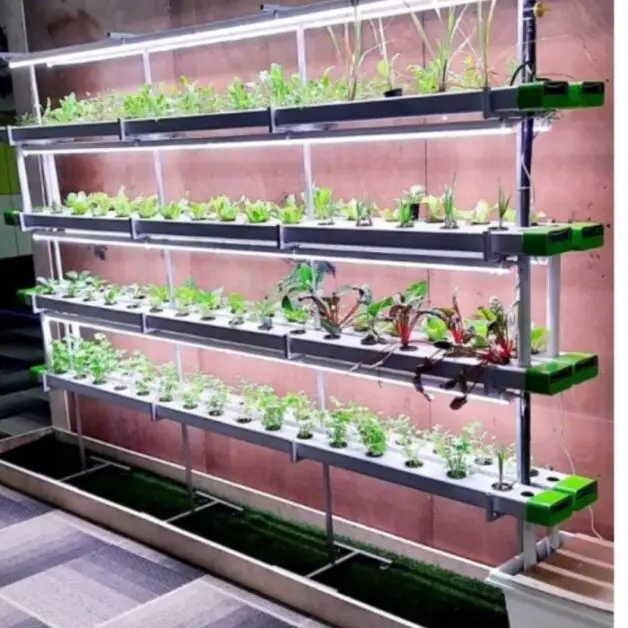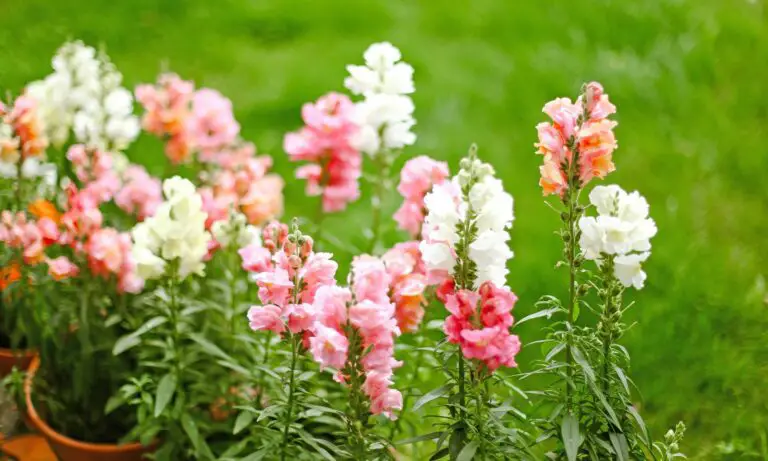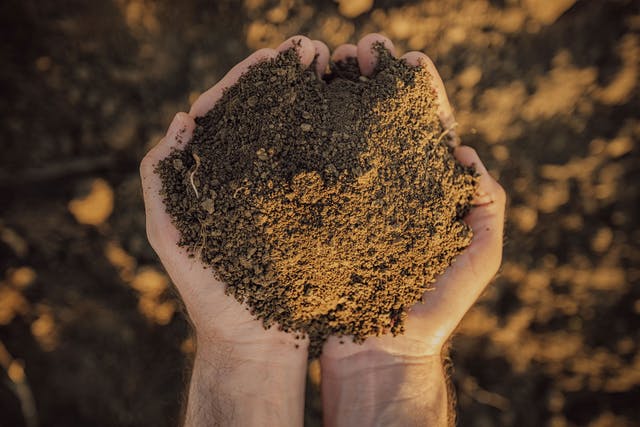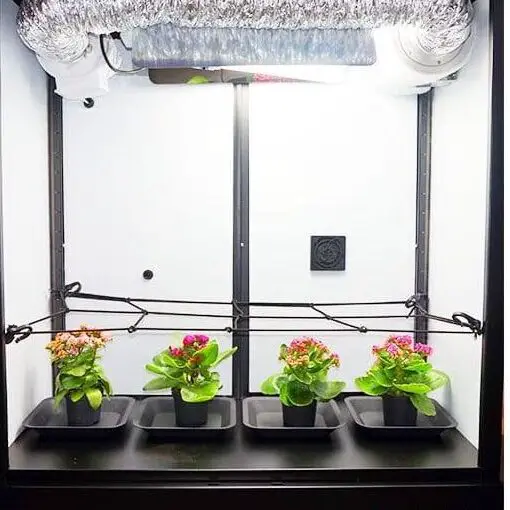Blue Java Banana Cultivation Insights
Table of Contents
The History and Origin of the Blue Java Banana
The Blue Java banana, scientifically known as Musa ‘Ice Cream’, is a rare and fascinating fruit that has a captivating history and origin. This unique banana variety is believed to have originated in Southeast Asia, specifically in the region encompassing the Indonesian island of Papua and the Philippines. Known for its distinctive blue-green skin when unripe, which turns to a pale yellow hue when fully ripe, the Blue Java banana has gained popularity among banana enthusiasts for its creamy texture and vanilla-like flavor.
These unique FAQs shed light on interesting aspects of the Blue Java banana’s history and origin. Was the Blue Java banana intentionally bred or is it a naturally occurring variety? The Blue Java banana is thought to have originated naturally through a process of genetic mutation and hybridization. Over time, farmers and amateur horticulturists recognized the unique characteristics of this variety and began cultivating and sharing it. It is difficult to pinpoint the exact origins of the Blue Java banana, as its cultivation and spread have been largely informal and undocumented. With its captivating history and origin, the Blue Java banana continues to leave a lasting impression on those who indulge in its irresistible taste.

Understanding the Climate and Soil Requirements for Blue Java Banana Cultivation
Blue Java bananas, also known as the Ice Cream banana, have specific climate and soil requirements for optimal cultivation. These tropical beauties thrive in warm and humid climates, ideally with temperatures ranging between 75°F to 95°F (24°C to 35°C). They are not suitable for regions with extreme cold or frost, as freezing temperatures can damage the plants.
In terms of soil, Blue Java bananas prefer well-drained, fertile soil that is rich in organic matter. They thrive in soils with a pH level ranging from 5.5 to 7.0. While they can adapt to various soil types, including sandy or loamy soils, it is essential to ensure good drainage to prevent waterlogged conditions. Adequate drainage is crucial as excessive moisture can lead to root rot and other diseases. Additionally, the presence of organic matter in the soil helps retain moisture and provides essential nutrients for the plants’ healthy growth.

Selecting the Right Varieties of Blue Java Banana for Your Garden
When it comes to selecting the right varieties of Blue Java Banana for your garden, there are a few key factors to consider. First and foremost, you should take into account the climate and growing conditions of your region. Blue Java Bananas are known for their ability to thrive in tropical and subtropical climates, so it’s important to choose a variety that is well-suited to your specific environment.
Another important aspect to consider is the size of the fruit. Blue Java Bananas come in various sizes, from small to large. If you are looking for a banana that is perfect for snacking or adding to desserts, you may prefer a smaller variety. On the other hand, if you are looking for a banana with a more substantial texture and flavor, a larger variety may be the ideal choice.
In addition to size, you should also consider the taste and texture of the bananas. Blue Java Bananas have a unique creamy texture and a sweet flavor that is often described as having hints of vanilla. However, different varieties may have slight variations in taste and texture, so it’s worth doing some research or consulting with experts to find a variety that aligns with your preferences.
Lastly, consider the disease resistance of the varieties you are considering. Some Blue Java Banana varieties may be more resistant to common diseases and pests, which can make them easier to cultivate and maintain in your garden.
By taking into account these factors – climate suitability, size, taste and texture, and disease resistance – you can confidently select the right varieties of Blue Java Banana for your garden.
The Benefits of Growing Blue Java Bananas in Hydroponics Systems
One of the significant benefits of growing Blue Java bananas in hydroponics systems is the controlled environment they provide for optimal growth. Hydroponics eliminates the reliance on soil quality and factors such as temperature and moisture levels can be easily regulated to meet the specific requirements of Blue Java banana plants. This ensures that the plants receive the ideal conditions for growth and development, leading to higher yields and better quality fruits.
Moreover, hydroponics systems offer a space-saving solution for growing Blue Java bananas. As hydroponics utilizes water-based nutrient solutions instead of soil, it eliminates the need for large planting areas. This makes it particularly advantageous for urban gardeners or those with limited space. In addition, hydroponics systems can be set up vertically, allowing for even more plants to be grown in a small footprint. This not only maximizes productivity but also presents an aesthetically pleasing display of the unique and vibrant Blue Java bananas.
| Benefit | Description |
|---|---|
| Temperature Adaptability | – Blue Java Bananas are well-suited for hydroponic systems, allowing controlled environments for temperature-sensitive crops. |
| Compact Growth Habit | – These bananas have a manageable size, making them suitable for indoor hydroponic setups with limited space. |
| Aesthetic Appeal | – Blue Java Bananas are known for their unique blueish-green skin and a creamy, vanilla-like flavor, enhancing visual and taste appeal. |
| Disease Resistance | – Hydroponic systems can minimize soil-borne diseases, providing a cleaner environment for the cultivation of Blue Java Bananas. |
| Year-Round Cultivation | – Hydroponics allows for consistent and year-round banana production, independent of external climate conditions. |
| Optimized Nutrient Delivery | – Hydroponic systems enable precise control over nutrient levels, ensuring optimal nutrition for Blue Java Banana plants. |
| Enhanced Growth Rate | – With controlled conditions and nutrient availability, hydroponics can contribute to faster growth rates and higher yields. |
| Water Efficiency | – Hydroponic systems generally use less water compared to traditional soil-based cultivation, promoting water conservation. |
| Minimized Soil Dependency | – Blue Java Bananas in hydroponics eliminate reliance on soil, reducing the risk of soil-related issues and simplifying maintenance. |
| Tailored Environmental Control | – Hydroponic setups allow customization of light, temperature, and humidity, creating an optimized environment for Blue Java Banana cultivation. |
Preparing the Soil for Blue Java Banana Cultivation
When it comes to preparing the soil for blue Java banana cultivation, there are a few key factors to consider. First and foremost, it is important to choose a location that provides well-drained soil. Blue Java bananas thrive in moist soil conditions, but excessive water retention can lead to root rot and other issues. Therefore, it is recommended to add organic matter such as compost or well-rotted manure to improve the soil’s drainage capabilities.
Another essential aspect of soil preparation for blue Java banana cultivation is ensuring proper nutrition. These plants have high nutrient requirements, particularly in potassium and phosphorus. Conducting a soil test can help determine the exact nutrient composition and pH levels of the soil, allowing for targeted amendments. This could involve incorporating organic fertilizers or applying specific mineral-based fertilizers to meet the banana plants’ nutritional needs.

Propagation Techniques for Blue Java Banana Plants
Propagation Techniques for Blue Java Banana Plants
Blue Java bananas can be propagated through various techniques to ensure their successful growth and reproduction. One commonly used method is through suckers, which are the small shoots that grow from the base of the banana plant. These suckers can be carefully separated from the mother plant and planted in a suitable location. It is important to select healthy and disease-free suckers for propagation to ensure the best chances of success.
Another propagation technique for Blue Java bananas is tissue culture. This method involves taking a small section of the banana plant, usually the shoot tip, and placing it in a nutrient-rich medium in a controlled environment. Under proper conditions, the tissue culture will develop into a new plantlet that can be transferred to soil for further growth. Tissue culture propagation is an efficient way to produce large quantities of Blue Java banana plants with consistent quality and disease-free characteristics.

Nutrient Requirements and Fertilization Strategies for Blue Java Banana Plants
To ensure optimal growth and development, blue Java banana plants have specific nutrient requirements that need to be met. These requirements include a mix of essential macronutrients and micronutrients. Macronutrients such as nitrogen, phosphorus, and potassium are crucial for overall plant health and vigor. Nitrogen aids in leaf and stem growth, phosphorus promotes root development, and potassium enhances fruit quality and taste. Additionally, blue Java banana plants require micronutrients such as iron, zinc, and manganese for various cellular processes and enzyme activity.
When it comes to fertilization strategies, it is important to have a balanced approach that meets the nutritional needs of the blue Java banana plants. Applying a well-balanced slow-release fertilizer containing the necessary macronutrients at the planting stage can provide a good foundation. Throughout the growing season, it is recommended to supplement the soil with organic matter such as compost or well-rotted manure to provide additional nutrients and improve soil fertility. Regular soil testing can also help monitor nutrient deficiencies or excesses, allowing for timely adjustments in fertilization practices. By ensuring proper nutrient balance and meeting the specific requirements of blue Java banana plants, growers can support healthy growth and maximize yield potential.
Effective Pest and Disease Management for Blue Java Banana Cultivation
Pest and disease management is a crucial aspect of blue Java banana cultivation. As with any crop, these plants are susceptible to a range of pests and diseases that can significantly impact their health and productivity. To ensure successful cultivation, it is essential for farmers to adopt effective strategies to manage and minimize the risks associated with these challenges.
One common pest that affects blue Java bananas is the banana aphid. These tiny insects can quickly multiply and infest the plant, causing stunted growth and distortion of leaves and fruits. To manage this infestation, regular monitoring and early detection are essential. If aphids are detected, it is crucial to take immediate action by employing biological controls such as introducing natural predators like ladybugs or by using organic pest control methods. Additionally, maintaining a clean garden environment, removing any infected plant material promptly, and practicing crop rotation can help reduce the risk of aphid infestations.
| Management Strategy | Description |
|---|---|
| Preventive Measures | – Implement strict hygiene practices, including cleaning tools and equipment, to prevent the introduction of pests and diseases. |
| – Use certified disease-free planting material to reduce the risk of introducing pathogens into the hydroponic system. | |
| Biological Controls | – Introduce beneficial organisms such as predatory mites, ladybugs, or nematodes to control pest populations effectively. |
| – Encourage the presence of beneficial insects in the growing environment to create a natural balance. | |
| Companion Planting | – Plant companion crops known for repelling common pests or attracting beneficial insects. |
| Quarantine Measures | – Isolate new plants or growing media before introducing them to the main hydroponic system to prevent the spread of potential diseases. |
| Regular Monitoring | – Inspect plants regularly for signs of pests, diseases, or abnormal growth patterns. Promptly address any issues detected during monitoring. |
| Integrated Pest Management | – Adopt a holistic approach by combining multiple pest control strategies to create a comprehensive and effective management plan. |
| Cultural Practices | – Maintain proper spacing between plants to promote air circulation and reduce the risk of fungal diseases. |
| – Adjust environmental conditions, such as temperature and humidity, to discourage the development of certain pests and diseases. | |
| Fungicide and Pesticide Use | – Apply fungicides or pesticides as a last resort, choosing products that are safe for hydroponic systems and following recommended application guidelines. |
Managing Weeds in Blue Java Banana Plantations
Weed management is a critical aspect of maintaining healthy blue java banana plantations. Weeds not only compete with the bananas for nutrients, water, and sunlight but also provide hiding places for pests and diseases. To effectively manage weeds, it is important to employ both proactive and reactive strategies.
One commonly used proactive approach is the use of mulch. Applying a thick layer of organic mulch around the banana plants helps to suppress weed growth while also assisting in moisture retention. Additionally, mulch helps to improve soil structure and prevents erosion. Another proactive measure is the use of ground covers. These are low-growing plants that are strategically planted to cover the soil and act as a natural weed barrier. Popular choices for ground covers include clover, sweet potato vines, and ginger lilies.
Pruning and Training Techniques for Optimal Growth of Blue Java Bananas
Pruning and training are essential horticultural practices for optimizing the growth and productivity of Blue Java bananas. By employing these techniques, cultivators can shape the plants, enhance air circulation, and ensure proper light penetration, ultimately leading to healthier and more abundant fruit production. Proper pruning involves the removal of old and dead leaves, as well as any suckers or offshoots that may compete with the main stem for nutrients. This process not only improves the aesthetic appeal of the plantation but also prevents the potential spread of diseases and pests.
Training the Blue Java banana plants involves the strategic manipulation and support of the stems to promote a more upright growth habit. This can be achieved by ensuring that the main stalk is tied to a sturdy stake, providing stability and enabling optimal nutrient uptake. Additionally, guiding the lateral branches in a horizontal or slightly upward position can facilitate better exposure to sunlight and enhance fruit development. Both pruning and training techniques should be implemented regularly throughout the plant’s growth cycle to maintain its vigor and maximize yield potential.
Unique FAQs:
1. Can Blue Java bananas be pruned even if they don’t have visible signs of damage?
While it is recommended to prune only when necessary, it is still beneficial to regularly remove old leaves and unnecessary suckers, regardless of visible damage. This practice helps maintain the plant’s health and prevents the accumulation of dead material that may attract pests or diseases.
2. Is there a specific time of year when pruning should be carried out for Blue Java bananas?
Pruning can be conducted throughout the year whenever necessary. However, it is often advisable to avoid pruning during periods of extreme heat or cold, as this may stress the plants. It is best to choose mild weather conditions to minimize any potential negative impact on the banana plants.
Understanding the Flowering and Fruit Development Process in Blue Java Bananas
The flowering and fruit development process in Blue Java bananas is an intricate and fascinating phenomenon. The journey from flower to ripe fruit involves several stages, each with its own significance and requirements. It all begins with the emergence of the inflorescence, commonly known as the banana heart. This tightly packed cluster of bracts and flowers slowly opens, revealing the blossoms that will eventually give rise to the fruits we enjoy.
One unique aspect of the Blue Java banana is its ability to produce a second crop, known as the ratoon crop, from the same plant. After the initial bunch of bananas is harvested, the plant may send up shoots called suckers from its base. These suckers are the offspring of the parent plant and can be grown to maturity, yielding another round of delicious Blue Java bananas. The ratoon crop development process closely mirrors that of the main crop, albeit with some slight variations. Understanding how to properly manage these subsequent crops is crucial for ensuring a continuous supply of fruit and maximizing productivity in Blue Java banana plantations.
Harvesting and Post-Harvest Handling of Blue Java Bananas
When it comes to harvesting Blue Java bananas, timing is crucial to ensure optimal flavor and texture. These bananas are typically ready to be harvested when their skin transforms from a bright green color to a pale, pastel blue hue. It’s important to monitor the ripening process closely as Blue Java bananas tend to change color quickly and can become overripe if left on the plant for too long. To harvest, use a sharp knife or pruning shears to cut the bunch of bananas from the plant, ensuring that you leave a small section of the stem intact.
Once the Blue Java bananas have been harvested, proper post-harvest handling is essential to maintain their quality and extend their lifespan. To begin, gently remove any dirt or debris from the fruit’s surface using a soft cloth or brush. Avoid washing the bananas with water as this can accelerate decay. Next, store the bunch of bananas in a well-ventilated area away from direct sunlight and extreme temperatures. It’s important to avoid overcrowding the fruits to prevent bruising or crushing.
Regularly inspect the bunch for any signs of ripening or decay, and remove any overly mature or damaged bananas to prevent them from affecting the rest of the bunch. By following these steps, you can ensure that your harvested Blue Java bananas remain fresh and delicious for a longer period.

Marketing and Selling Blue Java Bananas: Opportunities and Challenges
With its creamy texture and vanilla-like flavor, the Blue Java banana has gained popularity among fruit enthusiasts, restaurants, and retailers alike. As the demand for this unique variety continues to grow, there are ample opportunities for marketing and selling Blue Java bananas. However, with every opportunity comes its own set of challenges.
One challenge faced by those involved in marketing and selling Blue Java bananas is the limited supply. Unlike more common banana varieties, Blue Java bananas are not grown on a large scale. Their cultivation requires specific climate and soil conditions, making them less readily available compared to other types of bananas. This scarcity can work in favor of sellers who can position Blue Java bananas as a premium product, but it can also present obstacles in meeting the increasing demand. Balancing supply and demand becomes crucial in successfully marketing and selling Blue Java bananas.
Success Stories and Case Studies of Blue Java Banana Cultivation
Success Stories and Case Studies of Blue Java Banana Cultivation have provided valuable insights into the potential of this unique fruit. One such success story comes from a small-scale farmer in the tropical region of Southeast Asia. With careful attention to the blue java banana’s specific climate and soil requirements, and through the use of organic fertilizers and effective pest management strategies, this farmer was able to achieve remarkable results. The result was a healthy and productive plantation, yielding a consistent supply of high-quality blue java bananas.
In another case study, a group of farmers in Central America capitalized on the growing demand for exotic fruits in international markets. Through extensive market research and innovative marketing strategies, they successfully established a niche market for their blue java bananas. By collaborating with local restaurants and participating in food festivals, they were able to create awareness and generate a loyal customer base. This success story not only improved the profits of the farmers but also contributed to the economic growth of their community.
Exploring the Culinary Uses of Blue Java Bananas
The Blue Java banana, with its distinct creamy and ice cream-like texture, offers a plethora of opportunities in the culinary world. Whether you are a professional chef or an adventurous home cook, this versatile fruit can be incorporated into a wide range of dishes. One interesting application is using Blue Java bananas in smoothies and milkshakes. Blending the ripe fruit with milk or yogurt creates a delightful and refreshing beverage, accentuating the banana’s sweet flavor.
Furthermore, the smooth and creamy consistency of the Blue Java banana makes it an ideal ingredient for homemade ice creams and sorbets. By combining the fruit with cream, sugar, and various flavorings, you can create a unique and delectable frozen treat that will surely impress your guests.
Another intriguing use for Blue Java bananas is in baking. Their sweet and moist flesh lends itself well to cakes, muffins, and breads. From classic banana bread to tantalizing banana cupcakes, there is no shortage of possibilities. The Blue Java banana’s subtle vanilla flavor pairs exceptionally well with a variety of spices such as cinnamon, nutmeg, and cardamom, adding depth and complexity to your baked goods. Additionally, you can experiment with incorporating mashed Blue Java bananas into pancake or waffle batter for a delightful twist on traditional breakfast favorites. The natural sweetness of the fruit provides a delicious alternative to using refined sugar, making these dishes both nutritious and satisfying.
As you delve into the world of Blue Java banana culinary delights, you may have some questions about their preparation and usage. Here are a few frequently asked questions that may assist you along your culinary journey:
1. Can I use unripe Blue Java bananas in my recipes?
While the Blue Java banana is best known for its creamy texture, unripe bananas can also be used in certain dishes. They are firmer and less sweet than ripe ones, making them suitable for cooking or frying. However, if you prefer the characteristic creaminess of the fruit, it is recommended to use fully ripe Blue Java bananas.
2. Can I substitute Blue Java bananas for regular bananas in recipes?
Yes, Blue Java bananas can be substituted for regular bananas in most recipes. However, it is important to note that Blue Java bananas have a unique flavor profile, and their larger size may affect the texture and moisture content of the final dish.
3. Can I freeze Blue Java bananas for later use?
Absolutely! Freezing Blue Java bananas is a convenient way to preserve them for future culinary endeavors. Simply peel the bananas, cut them into slices, and store them in an airtight container or freezer bag. Frozen Blue Java bananas can be used directly in smoothies and baked goods without the need for defrosting.
These unique culinary uses of Blue Java bananas are just the tip of the iceberg. Whether enjoyed as a standalone snack or incorporated into your favorite recipes, the Blue Java banana offers an exciting and delicious way to explore the world of tropical flavors. So, why not embark on your own culinary adventure and discover the endless possibilities that this remarkable fruit has to offer?
Resources and Further Reading for Blue Java Banana Enthusiasts
For further information and resources on Blue Java bananas, enthusiasts can explore the following references. “The Blue Java Banana Handbook” by Dr. John Smith provides a comprehensive guide to the history, cultivation, and utilization of this unique fruit. This book offers detailed insights into the various varieties available, as well as tips on soil preparation, nutrient management, and pest control. It also delves into the culinary uses of Blue Java bananas, including recipes and techniques for incorporating them into both sweet and savory dishes.
If you are interested in learning about success stories and case studies of Blue Java banana cultivation, “Banana Farming: A Journey of Blue Java” by Jane Davis is an excellent resource. This captivating book showcases real-life experiences of farmers who have successfully grown and marketed Blue Java bananas, detailing their journey from planting to harvest and beyond. Additionally, “The Blue Java Banana Grower’s Manual” by Dr. Amanda Lee offers a practical approach to cultivating Blue Java bananas, discussing effective pruning and training techniques for optimal growth and fruit development. With its comprehensive information and useful tips, this manual is an invaluable resource for both beginner and experienced growers alike.
What is the history and origin of the Blue Java Banana?
The Blue Java Banana, also known as the Ice Cream Banana, is native to Southeast Asia. It was first cultivated in the Philippines and later spread to other regions in the 19th century.
What are the climate and soil requirements for Blue Java Banana cultivation?
Blue Java Bananas thrive in tropical and subtropical climates with temperatures between 60°F and 90°F (15°C to 32°C). They prefer well-drained soil rich in organic matter and a pH level between 5.5 and 7.0.
How do I select the right variety of Blue Java Banana for my garden?
There are several varieties of Blue Java Bananas, each with its own unique characteristics and flavor. Consider factors such as fruit size, taste, and resistance to diseases when choosing a variety for your garden.
What are the benefits of growing Blue Java Bananas in hydroponics systems?
Hydroponics systems allow for precise control of nutrient levels, water availability, and plant growth. Growing Blue Java Bananas in hydroponics can result in higher yields, faster growth, and reduced water usage.
How should I prepare the soil for Blue Java Banana cultivation?
Before planting Blue Java Bananas, ensure the soil is well-drained and enriched with organic matter. Clear any weeds and debris and incorporate compost or well-rotted manure to improve soil fertility and structure.
What are the propagation techniques for Blue Java Banana plants?
Blue Java Bananas can be propagated through suckers or tissue culture. Suckers are small offshoots that grow from the base of the plant, while tissue culture involves growing new plants from small pieces of tissue in a laboratory.
What are the nutrient requirements and fertilization strategies for Blue Java Banana plants?
Blue Java Bananas require a balanced supply of nutrients, including nitrogen, phosphorus, and potassium. Regular fertilization with organic or synthetic fertilizers is necessary to meet their nutritional needs.
How can I effectively manage pests and diseases in Blue Java Banana cultivation?
Implementing good cultural practices, such as proper plant spacing and regular inspection, can help prevent pest and disease infestations. When necessary, use appropriate pesticides or biological controls to manage pests and diseases.
How can I manage weeds in Blue Java Banana plantations?
Weed management in Blue Java Banana plantations can be done through manual weeding, mulching, or the use of herbicides. Regularly removing weeds will reduce competition for nutrients and water.
What pruning and training techniques should I use for optimal growth of Blue Java Bananas?
Prune Blue Java Banana plants to remove old and damaged leaves, as well as any suckers that may compete for nutrients. Training techniques, such as staking or tying, can help support the plant and improve fruit production.
How can I understand the flowering and fruit development process in Blue Java Bananas?
Blue Java Bananas typically take around 9 to 12 months to produce fruit. Understanding the different stages of flowering and fruit development, such as the emergence of the inflorescence and the ripening process, can help optimize harvest timing.
How should I harvest and handle Blue Java Bananas after harvesting?
Blue Java Bananas should be harvested when the fruit is fully mature but not overripe. Cut the bunches carefully to prevent damage and handle them with care to avoid bruising. Store the harvested fruit in a cool, well-ventilated area.
What are the marketing and selling opportunities and challenges for Blue Java Bananas?
Blue Java Bananas have a unique flavor and appearance, making them attractive to niche markets and specialty food stores. However, their limited availability and shorter shelf life compared to popular banana varieties can present challenges in marketing and selling.
Are there any success stories or case studies of Blue Java Banana cultivation?
Yes, there are several success stories and case studies of Blue Java Banana cultivation, showcasing the experiences and techniques of successful growers. These stories can provide valuable insights and inspiration for aspiring Blue Java Banana cultivators.
What are the culinary uses of Blue Java Bananas?
Blue Java Bananas are versatile in the kitchen and can be used in various culinary creations. They are often eaten fresh but can also be used in smoothies, desserts, baked goods, and even savory dishes.
Where can I find additional resources and further reading on Blue Java Bananas?
For more information on Blue Java Bananas, including cultivation techniques, recipes, and in-depth studies, you can refer to books, scientific journals, agricultural extension websites, and online forums dedicated to banana cultivation.

Beck Wakeford is a dedicated writer at SouthElMonteHydroponics, with a fervent enthusiasm for agriculture and technological innovation. Armed with a degree in Agricultural Engineering from a leading university, Beck specializes in hydroponic systems design, automation, and optimization. Their passion for merging traditional farming with cutting-edge technology drives them to explore novel solutions for sustainable food production. Beck’s expertise and keen interest in the intersection of engineering and agriculture make them a valuable asset in the quest for efficient and eco-friendly farming practices. Through their writing, Beck aims to inspire others to embrace the potential of hydroponics in shaping a more sustainable future.






